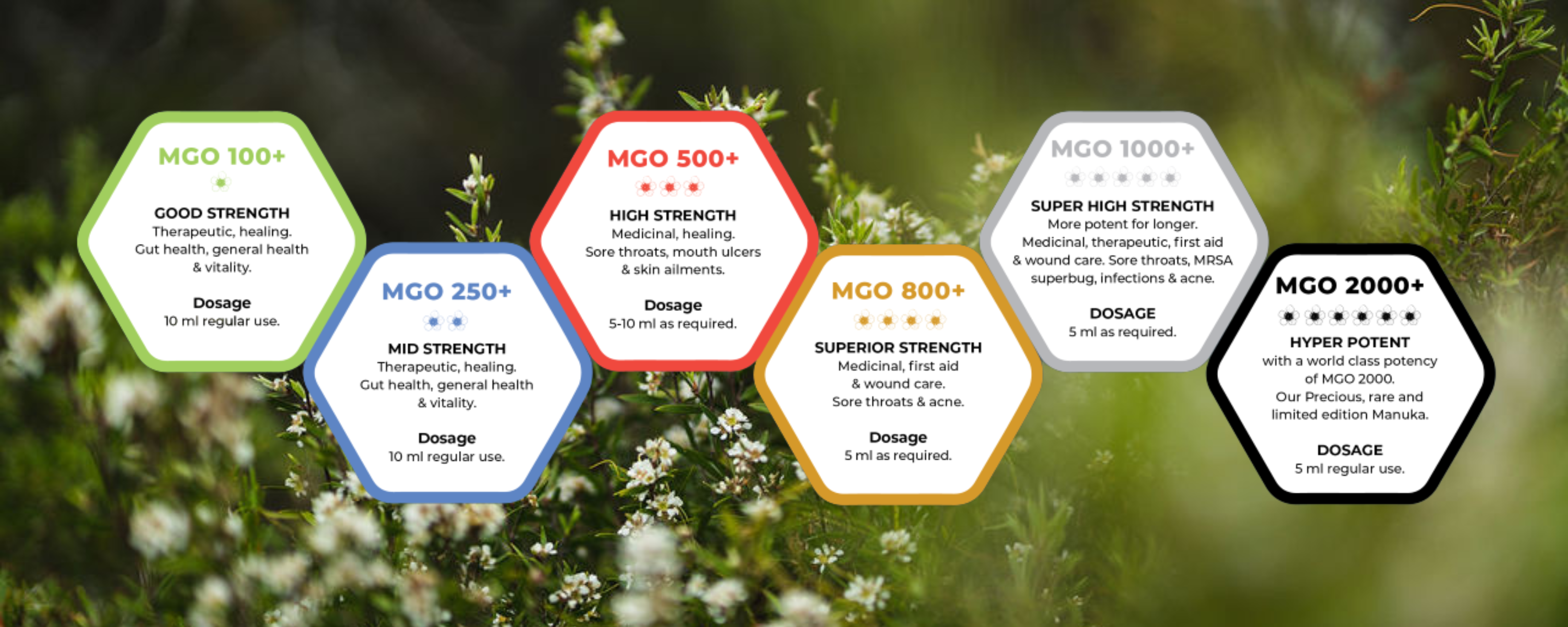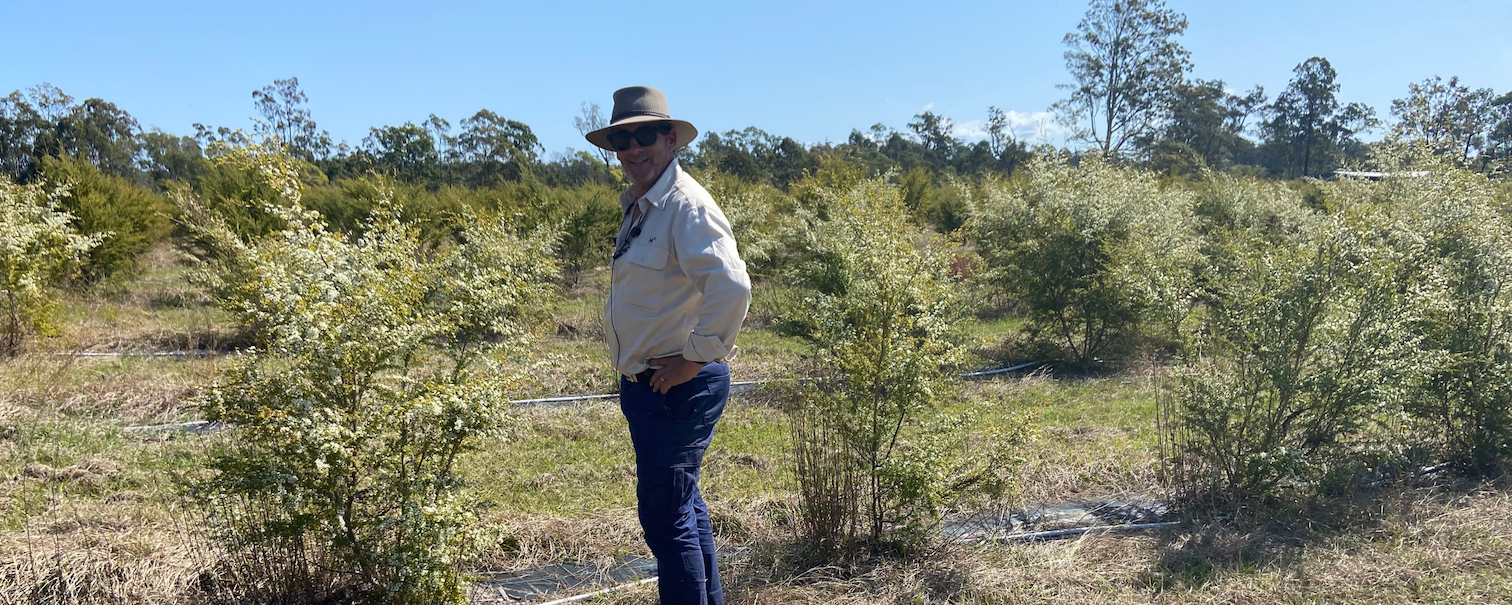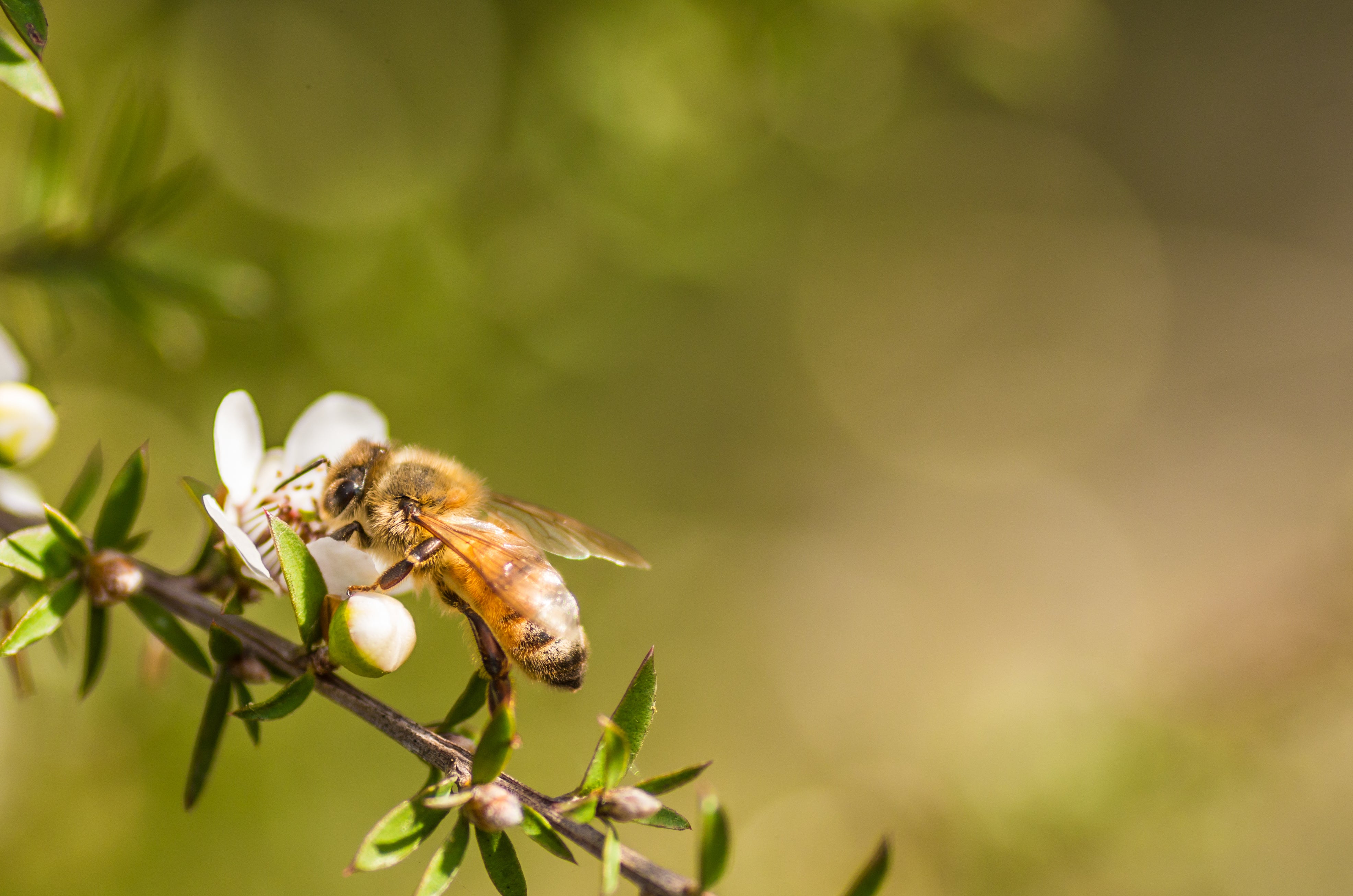
What is 'MGO' in Manuka Honey?
Why is Manuka honey Antibacterial?
Manuka honey is produced by honeybees gathering nectar from the Australian native bush (Leptospermum ) Manuka Tree.
As an Australian autochthonous plant, there are over 85 species of Leptospermum that grow in abundance along the East Coast of Australia.
Recent research confirms the nectar of 15 varieties contain high levels of DHA, the precursor to MGO, the active ingredient in Manuka honey, which is responsible for its potent antibacterial activity, and health benefits.
Why are Manuka Trees so special?
The nectar of Manuka tree contains a molecule dihydroxyacetone (DHA) which is measured in milligrams per kilogram.
When the bees collect this nectar and take it to the hive, the molecule starts to naturally convert to methylglyoxal (MGO).
It is the MGO, also measured in milligrams per kilogram, that determines the antibacterial potency of the honey.
The higher the MGO content, the higher the antibacterial potency of the Manuka honey.
What does 'MGO' mean in Manuka honey?
The honey produced from these Australian native bushes has varying levels of MGO and is naturally antibiotic, anti-inflammatory and generally good for you when eaten.
High MGO Manuka has been shown to be effective in the treatment of burns, wounds, cuts and other skin ailments such as acne, psoriasis and eczema.
However, for honey to maintain its sterility and natural and beneficial enzyme levels, it must be handled correctly from hive to home.
While the nutritional value remains consistent from batch to batch, the antibiotic activity of Manuka honey derived honeys can vary.
Things like the initial collection and storage conditions and the species of Manuka Tree (leptospermum) with different levels of DHA all influence the honey’s activity levels.
Therefore, each batch of honey is individually tested to measure its activity levels and the results are printed on the label of each jar when packaged.
How Is The Strength of Manuka Honey Measured?
The strength of Manuka honey is measured initially from the levels of MGO in mg/kg and its non-peroxide activity (NPA).
The higher the MGO the more potent and powerful the honey’s antibacterial benefits.
New Zealand’s Manuka honey is trademarked the Unique Manuka Factor (UMF®) however, this is the same as the NPA.
MGO Conversion Table to UMF/NPA Rating

Scientific research has established that Manuka honey with an activity rating of equivalent to MGO level of 500 or higher are effective against Methicillin-resistant Staphylococcus Aureus (MRSA) and super bugs such as Golden staph.
As such, Manuka honeys have found medicinal applications in the treatment of minor burns, wounds and skin ailments in environments such as hospitals and veterinary clinics.
Gather By’s Laboratory Testing and Quality Assurance
Gather By produces and sells Manuka honey ranging in potency from MGO 100+ to MGO 2000+.
Each jar is printed with the honey’s MGO content and corresponding NPA rating.
All batches of honey are independently tested and provided with a Certificate of Authenticity to guarantee potency.
All of our Gather By honey is produced Raw, unpasteurised, with the minimum of processing to preserve the natural therapeutic bioactive properties of Manuka honey.



1 comentário
A very informative article. I will be checking the labels in futyre
Raie
Deixar comentário
Este site é protegido por hCaptcha e a Política de privacidade e os Termos de serviço do hCaptcha se aplicam.